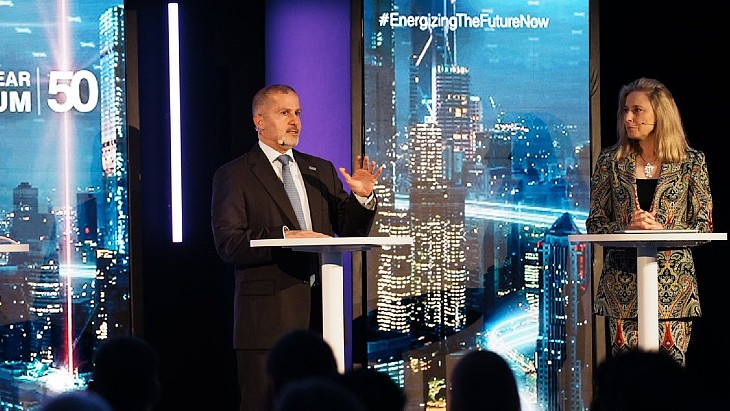Launched by President Donald Trump through an Executive Order dated 24 November, the White House says the mission is inspired by the legacy of the Apollo Programme "to unite America's brightest minds, most powerful computers, and vast scientific data into one cooperative system for research".
The Department of Energy (DOE)-led mission will harness artificial intelligence (AI) and advanced computing to double the productivity and impact of US science and engineering within a decade, and will "deliver decisive breakthroughs to secure American energy dominance, accelerate scientific discovery, and strengthen national security", the department said.
The Genesis Mission will focus on three key challenges: American energy dominance; advancing discovery science; and ensuring national security. A list of "at least 20 science and technology challenges of national importance that the Secretary assesses to have potential to be addressed through the Mission" must be drawn up within the next 60 days. Nuclear fission and fusion energy are one of the priority domains to be included in the list.
"Throughout history, from the Manhattan Project to the Apollo mission, our nation's brightest minds and industries have answered the call when their nation needed them," Secretary of Energy Chris Wright said, adding that the Genesis Mission "will unleash the full power of our National Laboratories, supercomputers, and data resources to ensure that America is the global leader in artificial intelligence and to usher in a new golden era of American discovery".
Removing barriers
The announcement builds on President Trump's Executive Order Removing Barriers to American Leadership In Artificial Intelligence, signed in January and under which the DOE has already announced plans to co-locate data centres and new energy infrastructure on its lands. The Executive Orders signed by the President in May took this further, with measures to expedite the development and deployment of advanced reactors on federal land. In October, the US National Nuclear Security Administration issued requests for proposals to build and power AI data centres at the Savannah River Site and the Oak Ridge Reservation in which the incorporation of "innovative" energy generation such as advanced nuclear reactor technology is particularly encouraged.
Wright has designated Under Secretary for Science Darío Gil to lead the initiative, which will mobilise 17 National Laboratories, industry, and academia to build an integrated discovery platform connecting supercomputers, AI systems and next-generation quantum systems with advanced scientific instruments. Once complete, the platform will be "the world's most complex and powerful scientific instrument ever built", the DOE said.
Assistant to the President for Science and Technology Michael Kratsios is tasked with "general leadership", including coordination of participating executive departments and agencies through the National Science and Technology Council.
Amazon invests
On the same day the Executive Order was signed, Amazon Web Services (AWS) announced an investment of up to USD50 billion in the expansion of its AI and supercomputing infrastructure for US government agencies, adding nearly 1.3 GW of computing capacity for its government customers by building data centres with advanced compute and networking technologies and giving federal agencies access to AWS's comprehensive AI services. The investment directly supports the priorities outlined in the Administration's July 2025 AI Action Plan, the company said.
"Our investment in purpose-built government AI and cloud infrastructure will fundamentally transform how federal agencies leverage supercomputing," AWS CEO Matt Garman said. "We're giving agencies expanded access to advanced AI capabilities that will enable them to accelerate critical missions from cybersecurity to drug discovery."
Amazon is a signatory of the Large Energy Users Pledge supporting the goal of at least tripling global nuclear capacity by 2050. It is working together with Washington state utility Energy Northwest and technology developer X-energy on plans to build up to 12 small modular reactors near Energy Northwest's Columbia Generating Station, and has also partnered with Talen Energy Corporation for the long-term supply of electricity from the Susquehanna nuclear power plant in Pennsylvania to support Amazon Web Services' data centres.

_24725.jpg)




_18570.jpg)
_16159.jpg)
_49205.jpg)





